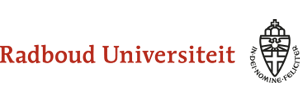American English Phonetics
Another American English Faculty Project
6.3.8 GA /ʌ/ and /ə/
GA /ʌ/ is a central, half-open, unrounded vowel. It’s often assumed that the only difference between /ʌ/ and /ə/ is that /ʌ/ occurs in strong syllables and /ə/ in weak syllables. However, /ʌ/ is considerably more open. Although /ʌ/ is a lax vowel, it is quite long.
Advice for Dutch learners:
Dutch learners often have difficulty in hearing and making the difference between /ʌ/ and /ɑː/. One thing you must make absolutely sure of is that you know where which phoneme is used. Note that /ʌ/ is usually spelled “u” or “o” as in cup and love, and /ɑː/ usually “a” and “o”. The spelling “o”, therefore, is likely to give you cause to go to the LPD.
For /ʌ/, try and use the quality of the AN /ɑ/ of Adje, and use it in duller.
For /ɑː/ open the mouth wide, and make a really open back vowel. Try it in dollar.
Here are some minimal pairs with /ɑː/ and /ʌ/: Practice saying them.
| ɑː | ʌ |
|---|---|
| sock /sɑːk/ | suck /sʌk/ |
| hot /hɑːt/ | hut /hʌt/ |
| not /nɑːt/ | nut /nʌt/ |
| cotton /ˈkɑːt̬ən/ | cuttin’ /ˈkʌt̬ɪn/ |
| pot /pɑːt/ | putt /pʌt / |
| dock /dɑːk/ | duck /dʌk/ |
| shot /ʃɑːt/ | shut /ʃʌt/ |
| robber /ˈrɑːbər/ | rubber /ˈrʌbər/ |
Weak /ə/ is short. lts quality is central unrounded, and ranges from half-close to half-open, depending on context. Before palato-alveolars and velars, it is closish, and, particularly before velars, it can be interpreted as /ɪ/. In word-final position, it is openish, and may be close to the usual quality of /ʌ/, as in villa, Amanda.
